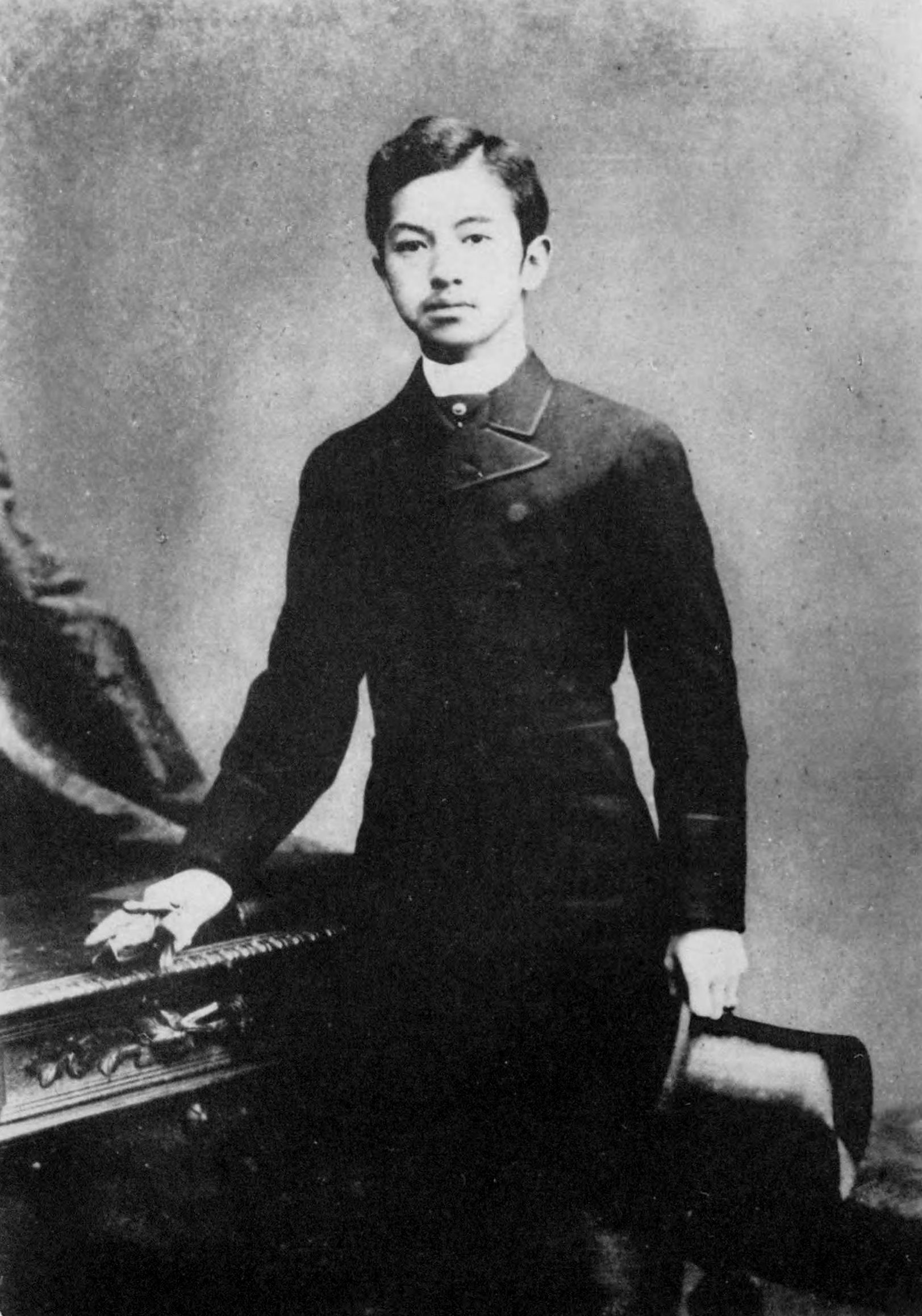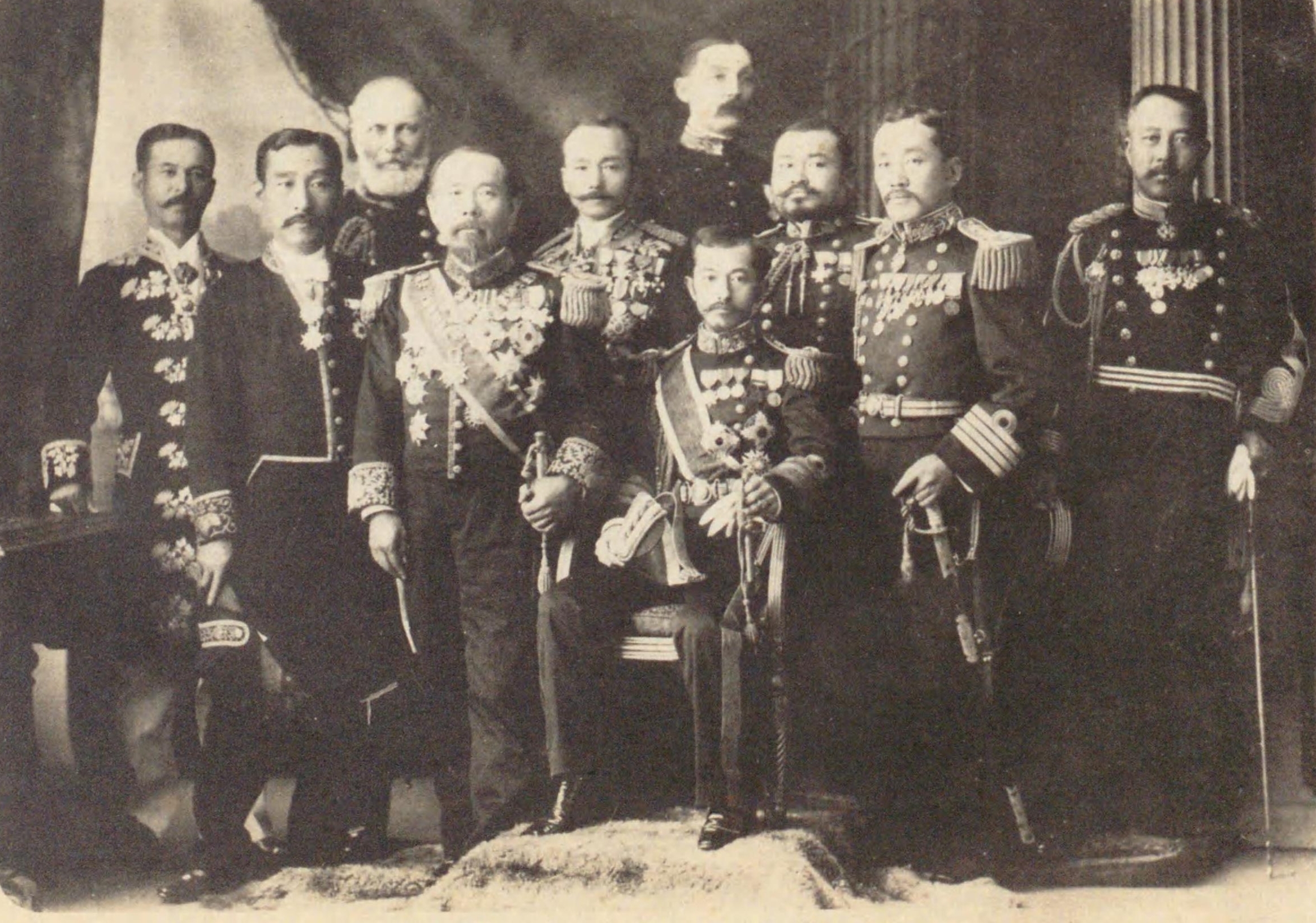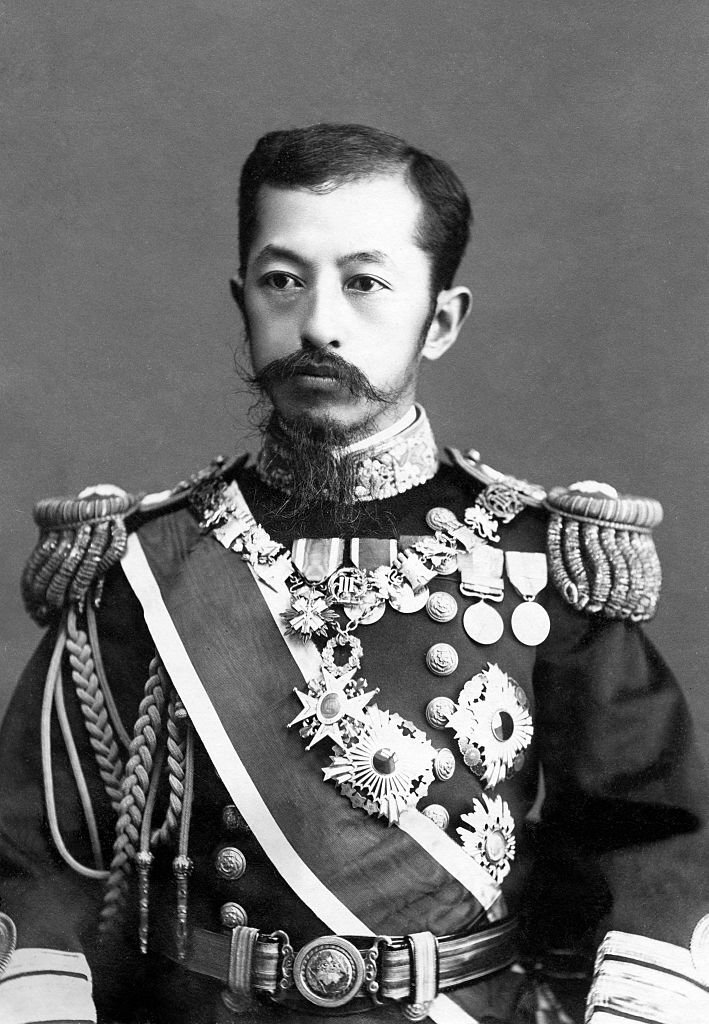1. Overview
Prince Arisugawa Takehito (有栖川宮威仁親王Arisugawa-no-miya Takehito-ShinnōJapanese, January 13, 1862 - July 5, 1913) was the 10th and last head of the Arisugawa-no-miya house, a cadet branch of the Imperial House of Japan, and a prominent career officer in the Imperial Japanese Navy. Known by his childhood name, 稠宮Sawano-miyaJapanese, and later by his nom de plume, 欽堂Kin-dōJapanese, Prince Takehito was born in Kyoto and, following the Meiji Restoration, was the first member of the Japanese Imperial Family to pursue a career in the navy.
His career spanned significant periods of Japan's modernization, including overseas training in Great Britain, commands of early Japanese warships, and involvement in crucial diplomatic missions such as escorting Russian Crown Prince Nikolai. Despite lacking direct combat experience in major conflicts like the First Sino-Japanese War, his strategic and diplomatic contributions were vital to Japan's rising international standing. As head of his house, he also served as an educator to Crown Prince Yoshihito (later Emperor Taishō) and navigated the challenges of succession following the early death of his only son, Prince Arisugawa Tanehito. His life concluded with a state funeral, marking the formal extinction of the Arisugawa-no-miya line, which was later revived as the Takamatsu-no-miya house. His legacy is preserved through numerous honors, memorials, and his association with various maritime organizations, reflecting his significant role in shaping modern Japan.
2. Early Life
Prince Arisugawa Takehito's early life was marked by his imperial lineage and the profound changes brought about by the Meiji Restoration, which fundamentally altered his path from a religious to a military vocation.
2.1. Birth and Background
Prince Takehito was born on January 13, 1862 (the 13th day of the 1st month of Bunkyū 2 in the old Japanese calendar) in Kyoto. He was the fourth son of Prince Arisugawa Takahito and Noriko Mori, a concubine, making him the eighth child overall. His childhood name was 稠宮Sawano-miyaJapanese. The Arisugawa-no-miya house was one of the four shinnōkecadet branchesJapanese of the Imperial Family, whose members were eligible to succeed to the Chrysanthemum Throne if the main line produced no heirs. Born while Japan was still under the rule of the Tokugawa shogunate, Prince Takehito was initially destined for a religious life, assigned to the Buddhist priesthood at the monzekitempleJapanese of 妙法院Myōhō-inJapanese in Kyoto.
2.2. Education and Early Military Career
With the Meiji Restoration in 1868, the traditional system of imperial princes entering the priesthood was abolished. Consequently, Prince Takehito was recalled to secular life and relocated to Tokyo in 1871, following his father's command from Emperor Meiji. In 1874, Emperor Meiji ordered him to pursue a military career, leading him to enroll in the preparatory course of the Imperial Japanese Naval Academy on July 13 of that year.
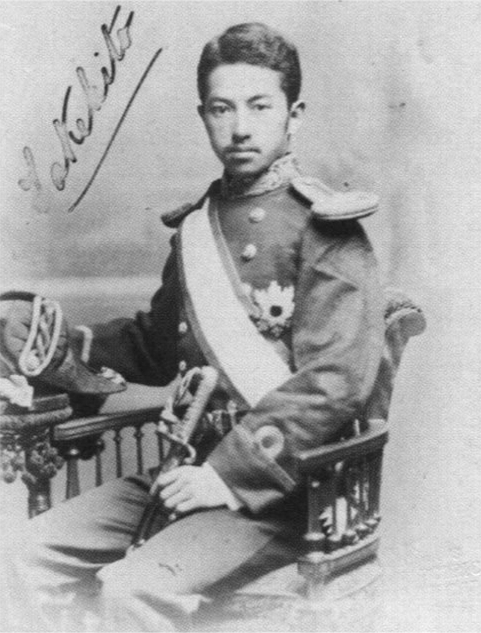
In 1877, despite his youth, Prince Takehito was dispatched as an observer to the Satsuma Rebellion, a significant uprising by disaffected samurai. He landed in Kagoshima shortly after imperial forces secured it, gaining firsthand exposure to the devastation of the conflict alongside his half-brother, Prince Arisugawa Taruhito. In 1876, Prince Takehito became engaged to Maeda Yasuko. In April 1878, Prince Taruhito, who was over 40 and had no heir with his consort, sought imperial permission to adopt Sawano-miya as his successor. The request was granted on May 18, and on August 26 of the same year, Sawano-miya was formally adopted by Emperor Meiji as his foster son, received the title of 親王ShinnōJapanese, and was given the personal name Takehito.
4. Later Life and Passing
The final period of Prince Takehito's life was marked by his responsibilities as the head of the Arisugawa-no-miya house, persistent health challenges, and the sorrowful extinction of his direct family line.
4.1. Head of the Arisugawa-no-miya House
Upon succeeding his half-brother, Prince Arisugawa Taruhito, as the 10th head of the Arisugawa-no-miya house on January 15, 1895, Prince Takehito assumed significant responsibilities within the Imperial Family. His trusted relationship with Emperor Meiji led to his appointment as Tōgū Fudō (Imperial Tutor) for Crown Prince Yoshihito (who would later become Emperor Taishō) from 1899 to 1903. Although he technically remained on active duty in the navy during this period, his actual engagement in military affairs significantly decreased as he focused on his imperial duties.
4.2. Health and Succession
Prince Takehito had a weak constitution from childhood and frequently took medical leaves during his naval career. After 1908, he suffered from pulmonary tuberculosis, which necessitated his semi-retirement in 1909. He moved to his summer home, the 舞子別邸Maiko villaJapanese in Tarumi-ku, Kobe, Hyōgo Prefecture, on September 18, 1909, to recuperate.
A profound sorrow in his later life was the premature death of his only son, Prince Arisugawa Tanehito, on April 7, 1908. Prince Tanehito, who was attending the Imperial Japanese Naval Academy at Etajima, Hiroshima, suffered from appendicitis and subsequently intestinal obstruction, leading to his demise. The loss of his son without a male heir meant that the direct line of the Arisugawa-no-miya house was destined for extinction, as the Imperial Household Law of 1889 prohibited adoption to preserve dynastic purity. Despite this, Prince Takehito expressed his fervent hope to Itō Hirobumi, a key figure in drafting the Imperial Household Law, that an imperial prince could be adopted to continue his house's legacy. Itō promised to consider a legal solution.
In 1910, during the enactment of the Imperial Family Status Law, Prince Takehito, though unwell, submitted his opinions on the regulations concerning the ranking of imperial family members, which were considered by Emperor Meiji. His granddaughter, Princess Kikuko, daughter of his daughter Princess Mieko, brought him considerable comfort in his final years, with sources noting his joy in her presence. In April 1911, Crown Prince Yoshihito visited Prince Takehito at his Maiko villa. In April 1912, Princess Mieko and her husband, Tokugawa Yoshihisa, visited him with their daughter Kikuko, leaving Kikuko at the villa to bring cheer to her grandfather.
4.3. Demise and State Funeral
Prince Takehito's health deteriorated significantly from March 1913, with symptoms of hemoptysis and heart palpitations. Medical professionals, along with imperial family members including the Empress Dowager 熾仁親王妃董子Taruhito-Shinnōhi TōkoJapanese and Princess Yasuko, gathered at his Maiko villa. On June 22, the Imperial Household Minister conveyed Emperor Taishō's message regarding the succession of the Arisugawa-no-miya house, which reportedly brought Prince Takehito peace of mind.
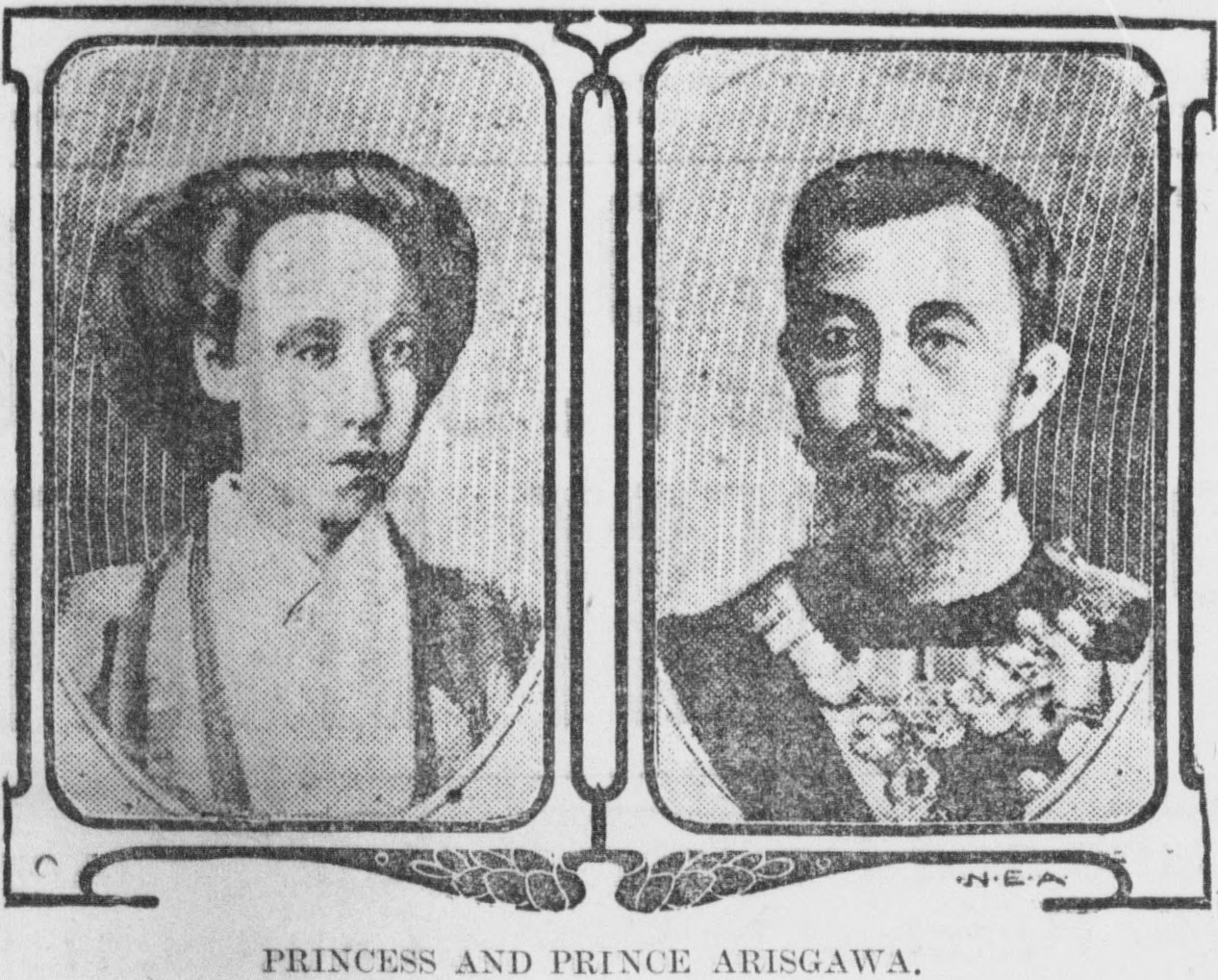
Prince Takehito passed away at his Maiko residence at 8:20 PM on July 5, 1913. However, his death was not immediately made public. His body was transported by a specially chartered train to his palace in Kōjimachi, Tokyo. On July 6, 1913, Emperor Taishō bestowed the title of "高松宮Takamatsu-no-miyaJapanese" - the former name of the Arisugawa-no-miya house - upon his third son, Prince Takamatsu Nobuhito, ensuring the continuity of a related imperial branch before the formal announcement of Prince Takehito's death. His death was formally announced on July 10, 1913, with this date becoming his "official death date." On July 7, 1913, after his actual death but before the official announcement, he was granted the honorary rank of Marshal Admiral and posthumously awarded the Collar of the Supreme Order of the Chrysanthemum.
His state funeral was held with solemn procedures. The 斂棺の儀Ryūkan-no-giJapanese (lying-in-state ceremony) took place on July 13 at 5:00 PM, followed by the 賜誄の儀Shiru-no-giJapanese (imperial message ceremony) on July 15 at 10:00 AM. The main funeral service, the 斂葬の儀Rensō-no-giJapanese, commenced with a coffin-front ceremony at 4:00 AM on July 17. The procession departed from the Arisugawa-no-miya palace at 6:00 AM, arriving at Toshimagaoka Cemetery at 8:10 AM. Attendees gathered by 8:50 AM, and the burial ceremony concluded at 9:50 AM. Subsequent rites included a provisional sanctuary service and grave service on July 18, a ten-day service on July 19, a fifty-day service on August 28, a ceremony for the return of the imperial spirit on August 29, and finally, a hundred-day service on October 16, marking the conclusion of the state funeral. During these ceremonies, his young granddaughter Kikuko's innocent longing to see her grandfather in the coffin deeply moved those present.
In remembrance of his significant contributions, Emperor Taishō dispatched imperial envoys to conduct memorial services at his grave on December 6, 1915, following his accession ceremony, and again on the 25th anniversary of Prince Takehito's marriage in 1925.
5. Personal Life
Prince Takehito's personal life revolved around his family, which, despite his efforts, ultimately faced the challenge of succession, leading to the direct line's extinction.
5.1. Marriage and Children
On December 11, 1880, Prince Arisugawa Takehito married Maeda Yasuko (born March 15, 1864 - died June 30, 1923), the fourth daughter of Maeda Yoshiyasu, who was the last daimyō of the Kaga Domain (modern Ishikawa Prefecture). Together, they had three children:
- Princess Isako (績子女王Isako-JoōJapanese, October 17, 1885 - September 30, 1886), who died in infancy.
- Prince Tanehito (栽仁王Tanehito-ŌJapanese, September 22, 1887 - April 7, 1908), who died prematurely of appendicitis while attending the Imperial Japanese Naval Academy.
- Princess Mieko (實枝子女王Mieko-JoōJapanese, February 14, 1891 - April 25, 1933). She married Tokugawa Yoshihisa, the eldest son of Tokugawa Yoshinobu, the last shōgun of the Tokugawa shogunate. Their daughter, Kikuko, later became Princess Takamatsu through marriage.
5.2. Extinction and Revival of the Family Line
The premature death of Prince Tanehito in 1908 without a male heir meant that the direct line of descent of the Arisugawa-no-miya house became extinct upon Prince Takehito's death in 1913. This was in accordance with the Imperial Household Law, which prohibited the adoption of heirs to preserve the purity of the imperial line.
However, recognizing the historical significance and contributions of the Arisugawa-no-miya house, Emperor Taishō, Prince Takehito's boyhood friend and former pupil, decided to revive the house. On July 6, 1913, just days before Prince Takehito's official death announcement, Emperor Taishō bestowed the ancient name of Takamatsu-no-miya upon his third son, Prince Takamatsu Nobuhito, thereby continuing a branch of the imperial family under a new designation. Notably, Prince Nobuhito later married Kikuko Tokugawa, who was a granddaughter of Prince Arisugawa Takehito through his daughter Princess Mieko. This union further cemented the connection between the revived Takamatsu-no-miya house and Prince Takehito's lineage.
6. Honors and Decorations
Prince Arisugawa Takehito received numerous honors and military ranks throughout his life, both during his active service and posthumously, reflecting his distinguished career and imperial status.
- December 31, 1875: Grand Cordon of the Order of the Rising Sun
- December 29, 1886: Grand Cordon of the Order of the Chrysanthemum
- November 29, 1889: Commemorative Medal for the Promulgation of the Meiji Constitution
- November 20, 1895: Order of the Golden Kite, 4th Class
- April 1, 1906: Order of the Golden Kite, 3rd Class, and the Russo-Japanese War Commemorative Medal
- April 18, 1909: Crown Prince's Korea Visit Commemorative Medal
- November 1902: Honorary Knight Grand Cross (GCB) in the Civil Division of the Most Honourable Order of the Bath (United Kingdom)
- July 7, 1913: Conferred the honorary rank of Marshal Admiral (after his actual death but before his official death announcement)
- July 7, 1913: Posthumously awarded the Collar of the Supreme Order of the Chrysanthemum
7. Legacy and Memorials
Prince Arisugawa Takehito's legacy endures through various memorial sites and his association with several influential organizations, particularly those related to maritime affairs.
7.1. Memorial Sites
Several locations in Japan are dedicated to or associated with Prince Arisugawa Takehito, preserving his memory and contributions:
- The site of Prince Takehito's Tokyo palace is now the Arisugawa-no-miya Memorial Park, located in Minami Azabu, Minato, Tokyo. Its extensive gardens are open to the public, though the prominent bronze statue in the park is of his half-brother, Prince Arisugawa Taruhito.
- His seaside summer home in Hayama, Kanagawa Prefecture, is now the site of the annex of the Kanagawa Prefectural Museum of Modern Art.
- The 天鏡閣TenkyōkakuJapanese in Inawashiro, Fukushima, which he personally designed, served as his summer villa. It is now designated an Important Cultural Property and functions as a public museum. On its grounds stands a large bronze statue of Prince Arisugawa Takehito, which was originally located at the Naval Staff College in Tsukiji, Tokyo. The statue, designed by Shin Kai, was proposed in 1917 and completed on October 24, 1921, standing at 66 ft (20 m) including its pedestal.
- The 舞子別邸Maiko villaJapanese in Tarumi-ku, Kobe, Hyōgo Prefecture, where Prince Takehito spent his final days, is now the site of the Seaside Hotel Maiko Villa Kobe.
- Yaho Tenmangū in Kunitachi, Tokyo, holds a stone monument commemorating Japan's first documented motor drive tour. This event, known as the "Long Distance Drive Gathering," was led by Prince Takehito on August 1, 1908, with the temple as its destination.
- The Tōkai-ji Ōyama Cemetery in Shinagawa, Tokyo, contains the grave of his birth mother, Noriko Mori.
- The 徳洋記念碑Tokuyō KinenhiJapanese (Tokuyō Memorial Stone) in Okushiri, Hokkaido, completed in 1931, honors Prince Takehito's efforts in a rescue operation after a British warship ran aground off Aonae Cape in 1880. Prince Takehito, then a naval ensign, was on board and participated in the rescue alongside island residents and other foreign warships. The monument has notably withstood the 1983 Japan Sea earthquake tsunami and the 1993 Hokkaido Nansei-oki earthquake tsunami.
7.2. Associated Organizations
Prince Arisugawa Takehito was closely associated with and served as the inaugural president or general director of several key organizations, particularly those related to maritime affairs, reflecting his deep commitment to Japan's naval development and public service:
- Imperial Japanese Naval Association (水交社SuikokaiJapanese) - General Director
- Japan Water Rescue Association (大日本帝国水難救済会Dai-Nippon Teikoku Suinan KyūsaikaiJapanese) - First President
- Japan Seamen's Aid Association (日本海員掖済会Nippon Kaiin Ekisai KaiJapanese) - First President
- Imperial Maritime Association (帝国海事協会Teikoku Kaiji KyōkaiJapanese) - First President
